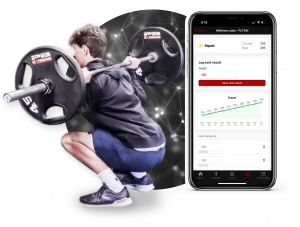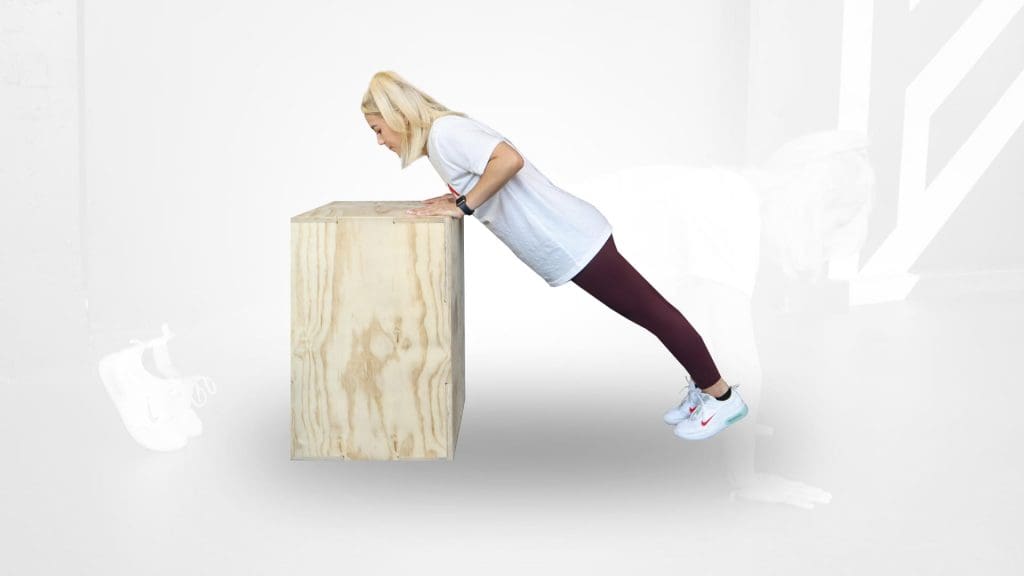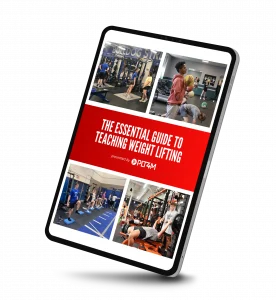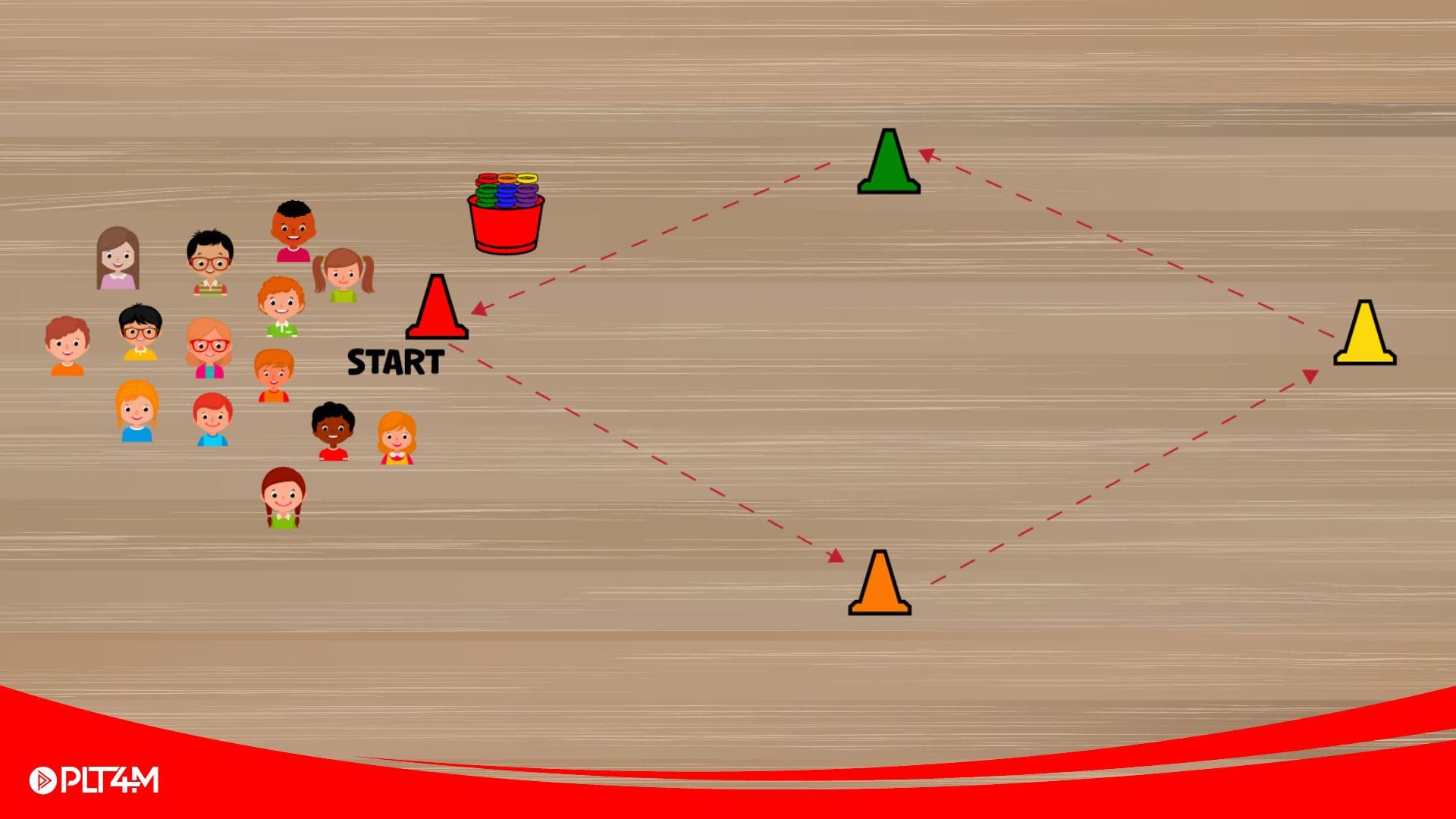Bodyweight exercises like the push up are fantastic additions to any strength training program or fitness journey. And like any movement or exercise, the push up can be scaled, modified, and progressed to empower individuals of all experiences and abilities. We unpack different options and opportunities within a pushup progression. Check out the points of performance to a push up and explore 6 different types of push-ups that can add variation and progression to this body weight exercise.
Push Up Points Of Performance
First, we must articulate, completely but concisely, the points of performance that constitute a perfect push-up. No matter what push-up variation we are using in our exercise routine, there are some fundamental starting points for proper technique with our push-up form. These include:
1. Hand Placement – Palms flat on the ground, fingers forward, just outside of the shoulders.
Hand placement might vary slightly depending on more advanced versions within the pushup progression. For example: DB close grip push ups will have us holding dumbbells rather than hands on the ground, but all the other points of performance will still apply.
2. Elbow Path – Shoulders remain externally rotated, tracking the elbows back towards the lats/rib cage, not flaring out to the side.
3. Midline Position – Core should remain engaged through the movement, maintaining a neutral spine. Hips should not sag, or move independent of the torso (think the worm style push up). Hips should never hit the ground and should move in time with the shoulders.
4. Full ROM – Chest must touch the floor at the bottom (not the abs) and elbows must lockout fully at the top.
Pushup Progression and Variation
There isn’t just one way to do a push up! So while might think of the regular push-up as the one performed from the ground, with the points of performance listed above, there are lots of ways to scale, progress, and vary the pushup progression to suit the needs of everyone from everyday fitness goers to advanced athletes.
Within our fitness journey and strength training, we can work through different pushup progressions to keep things fun and interesting. First and foremost, we want to make sure we solidify good form through elevated push-ups and regular push-ups from the ground. From there, we can start try different variations of the exercise.
Next, we will explore different push-up variations with instructional videos and written notes from PLT4M. Notice that while all of these center around a similar starting point, as we advance in our pushup progression we might be targeting or working different exercise goals and domains.
Find the different types of push-ups that work for you or your audience!
Note: This is not an exhaustive list of push up options! There are lots of others ways to vary and modify the push up for your audience. Hopefully these give you a good starting point for success.
1) Elevated Push-Ups
Even with an understanding of the movement, some individuals will lack the pressing or midline strength required to perform a push up from the ground. In fact, at first, most individuals will likely struggle to complete even 1 perfect push up from the floor.
In regards to the pushup progression, we here at PLT4M opt to scale difficulty of the press through elevation. By taking the press off of the floor (via a box, bench, desk, or other object), we decrease the force necessary to press to full lockout (changing the percentage of bodyweight the press moves and midline must support). Some individuals starting position might even be with wall push-ups, and that is okay!
This elevated push-up allows for the athlete to perform any prescribed volume of push ups in a given workout (thus developing their capacity) while not sacrificing form or the midline stabilization component (like kneeling push-ups). Once an athlete develops consistency at a given height , we move them down, increasing the difficulty. This consistent focus on appropriate movement mechanics, while progressing through an increasing level of difficulty results in the eventual completion of perfect reps from the floor.
2) “Regular” Push-Up
Once individuals progress from an elevated surface, they are ready to perform a regular push-up from the ground.
Within our pushup progression, it is important that it is okay to return to an elevated surface at any point while performing our regular push-ups if we start to struggle maintaining proper form.
For example, while an individual might be able to perform a few good reps, common faults we see are sagging hips or flared elbows. When this happens, find an elevated push-up position and keep working on capacity and overall muscular strength and endurance.
Free E-Book: Essential Guide to Teaching Weight Training
Our five essential steps to initiate or improve your weight training program. Filled with extra resources, videos, and real-life examples, don’t miss this free resource!
3) Hand Release Push Ups
Our hand-release push up is a simple, yet challenging variation in a pushup progression.
As with any push up, we begin in a hollow hold, arms locked and palms flat on the ground just outside of the shoulders. The individual descends to the floor, keeping the core engage and hips high (no sagging). At the bottom of the rep, though, the individual lets the chest rest on the ground (not the hips and thighs!). The hands must come off of the ground for a split second before initiating the press back up to full lock out.
By effectively halting the torso’s movement and disengaging the arms, we have cut out the element of elasticity (the SSC or stretch-shortening cycle) in the push off of the floor. Essentially we have gotten rid of the “rebound” effect which makes the rep more difficult, as every press begins at a standstill.
These will be more difficult than you may imagine and should only be performed by individuals that are proficient at a proper push ups from the ground. Scale to standard push ups when necessary!
4) DB Close Grip Push Ups
In this movement, we add an element of core strength, stability, and balance to the basic push by gripping two dumbbells. The points of performance in a standard push up apply here as well, except now our hands are gripping our dumbbells rather than being placed on the ground.
Keep the shoulders externally rotated, elbows tracking back, core engaged with hips up, and full range of motion.
5) Explosive Push Ups
The explosive push up is a simple but dynamic variation of our standard push up. It is essentially a plyometric pressing movement, and should be performed only by individuals that have already mastered the points of performance in the basic push up.
From standard push up plank position, the individual lowers him or herself to the floor with control. Instead of rising at the same pace to full extension, the individual contracts violently (like jumping with the arms), propelling themselves off the ground with speed. No clap or any other arm movement is necessary.
Catch the landing as softly as possible, by allowing yourself to slowly descend all the way back to the floor. Think about how you might land after a max effort jump, using the legs as shock absorbers, this time using the arms.
The importance here is the speed of ascent, not the height of your hands off of the floor.
6) Plyo Push Ups
Similar to explosive push-ups, the plyo push up is another fun variation in our pushup progression. It is essentially a “Box Jump” performed by pressing with the upper body instead of the legs. So we are performing the pressing movement up to a VERY LOW “box” via two weight plates. Such should be performed only by athletes that have already mastered the points of performance in the basic push up.
We begin by placing to bumper plates flat on the ground, just outside our hands in standard push up position/width on the floor.
From standard push up plank position, the athlete lowers him or herself to the floor with control. Instead of rising at the same pace to full extension, the athlete contracts violently (like jumping with the arms), propelling themselves off the ground with speed.
We “catch” ourselves by “landing” on the plates, on hand on each.Then, we bring one hand back to the floor at a time, resetting for the next rep.
The importance here is the speed of ascent, not the height of the plates.

Ready To Raise The Bar?
Our platform is the #1 choice for coaches and teachers looking to take their program to the next level. Learn how you can save time, improve results, and increase student engagement.
Key Takeaways On Pushup Progression
Push-up work is an awesome body weight exercise option that can be tweaked and modified to develop strength and keep things fun and interesting. But throughout our entire pushup progression, it is important to keep a few key takeaways in mind.
Master The Basics – The start of any good pushup progression begins with elevated push-ups. Not only will this help advance individuals to to the standard push up and beyond, but it is also the foundation for all future pressing in our strength training.
Maintain 4 Points of Performance – It is important to keep our 4 points of performance in mind when performing any type of push up. While we might think of pushups as an upper body strength training exercise, let’s not forget the importance of keeping our body in a straight line, tapping into our core and midline positioning. From there, key in on full range of motion and good form of our arms throughout the entire movement.
Progression Isn’t Always Linear – Just because an individual might be ready to try different pushup progressions and variations, it doesn’t mean you can’t go back to scaled and modified versions of the movement. With any great exercise, the success lies in the simplicity of proper form, technique, and movement mechanics.









